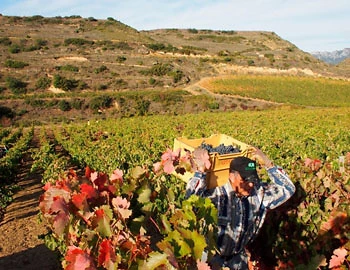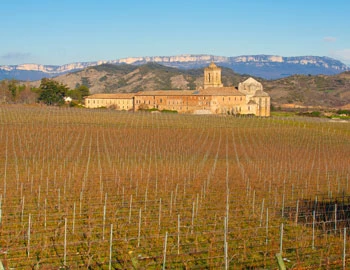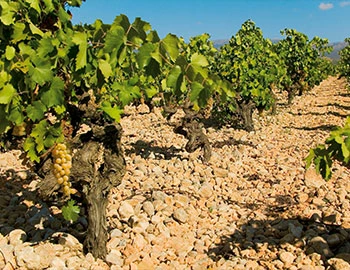
Santa Cruz de Artazu blanco 2019
DO Navarra, Artazu, 750 ml

| Grape variety: | Grenache Blanc |
| Producer: | Bodegas y Viñedos Artazu |
| Origin: | Spain / Navarra |
| Other vintages: |
Description
An inviting scent of ripe citrus fruits, white pepper, pineapple and a hint of flint (Silex). Deep, clear, spicy and juicy on the palate with an animated freshness. Granny Smith, notes of yellow flower, grapefruit, apple peel and acacia honey. Slightly smoky in the finish.
Attributes
| Origin: | Spain / Navarra |
| Grape variety: | Grenache Blanc |
| Ripening potential: | 2 to 13 years after harvest |
| Drinking temperature: | 10 to 12 °C |
| Food Pairing: | Apéro riche, Moroccan specialities, Grilled fish, Fish ragout with saffron sauce, Succulent chicken breast with cream sauc |
| Vinification: | fermentation in wooden barrel |
| Harvest: | hand-picking, strict selection, in small boxes |
| Maturation: | in steel tank, on the yeast |
| Maturation duration: | 27 months |
| Volume: | 13.0 % |
| Note: | Contains sulphites |
Bodegas y Viñedos Artazu
Bodegas y Viñedos Artadi is a Spanish winery group whose vineyards are in Alicante (Valencia), in the northeastern region of Navarre and in Álava and Gipuzkoa in the Basque Country. In 1985, a group of winegrowers founded this private cooperative project, which, with one tiny exception, only produces single-grape-variety wines.
Today it is run by a nature-loving family in cooperation with the top winemaker Juan Carlos López de Lacalle, maintaining a high standard of quality and pursuing a consistent terroir philosophy. His passion is the Garnacha grape variety. Since 2011, the vineyards have been cultivated according to biodynamic guidelines. Juan Carlos' motto is "a sense for nature and tireless work will lead us to success".
Bodega Artazu is located in the medieval wine-growing town of Artazu (Valdizarbe) in northern Navarre, where the Artadi Group has been growing wine since 1996. The vineyards are located around Artazu and in San Martín de Unx at a slightly cooler altitude of up to 600 metres. Garnacha vines have been growing there for over 60 years. The perfect conditions for aromatically dense wines that reflect their unique terroir. Juan Carlos is a master at vinifying individual plots and developing their terroir character.

Grenache Blanc
Strength for the white Châteauneuf
Grenache blanc is the white variant of the popular Mediterranean Grenache grape. It is grown primarily in the south of France. But it rarely appears by itself on the label. Its wines charm with their creamy texture, rich fruit and fine floral aromas, along with a distinctive anise note. But they develop quite a lot of alcohol. For this reason, it is often blended with more sparkling varieties. Vintners appreciate the Grenache blanc as an ingredient in the white Châteauneuf-du-Pape. It also flows into the light versions of Banyuls and Maury. Similar to port wines, these are dessert wines from French Catalonia, which are traditionally produced in carboys.

Navarra
Navarre: a land of many terroirs
Until 1841, Navarre was an independent kingdom with a rich wine culture. Thanks to varying soil types and equally diverse climatic influences, Navarra has an amazing array of wines. The spectrum ranges from substantial Chardonnays to drinkable rosés to red wines, where international varieties such as Cabernet Sauvignon and Merlot often set the tone along with Tempranillo and Garnacha. Exquisite sweet wines from Moscatel grapes are also vinified here.

Spain
Spain – Variety and perfection
“Somewhere in la Mancha, in a place whose name I do not care to remember...,” begins Don Quixote's odyssey.
The most famous part is definitely when Don Quixote thinks windmills are his enemy and wants to fight them – until they nearly kill him. It’s possible there was a bit too much of the La Mancha wine at play. Spanish vines fight for their survival in rugged landscapes, battling fierce drought and rough soils. But they fight well.


